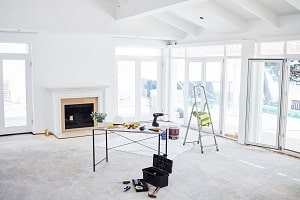
Business Advisory
Business Advisory Services
Everything you need to help you launch your new business entity from business entity selection to multiple-entity business structures.
Table Of Contents

By Jason Watson, CPA
Posted Saturday, September 7, 2024
This section is a mini version of our repairs versus improvements and rental property rehab sections on pages xx and yy. Here is a quick summary-
According to IRS Revenue Ruling 2000-4,
Section 263(a) and § 1.263(a)-1(a) provide that no deduction is allowed for any amount paid out for permanent improvements or betterments made to increase the value of any property or estate. Section 1.263(a)-2(a) provides that capital expenditures include the cost of acquisition, construction, or erection of buildings, machinery and equipment, furniture and fixtures, and similar property having a useful life substantially beyond the taxable year.
Cool. The things you buy that have a useful life substantially greater than one year are considered a capital expenditure (capex) and must be capitalized in most situations. What the heck is capitalized? Is this a grammar thing?
Simply put- you can either expense or capitalize a purchase. Expensing the purchase is an immediate deduction and therefore reduction in taxable income. Capitalizing the purchase requires listing the asset on your fixed asset listing and expensing over time through depreciation.
The first step is determining what you are repairing or improving? The unit of property (UOP) is generally the entire building including its structural components. However, under the final tangibles regulations, the improvement versus repair analysis applies to the building structure and each of the key building systems separately. There are a total of 9 separate systems if you also count the building structure itself.
The next step is to run through the three big safe harbors for rental property owners-
We discussed these in fine detail in our improvements versus repairs section. De minimis is the class favorite since it is quite simple and covers most purchases or situations. However, small taxpayers and routine maintenance have some teeth, but are commonly overlooked by even the most experienced tax professionals.
If the expenditure falls under the betterment, restoration and adaptation tests, then it is considered a capital improvement, and therefore must be capitalized and depreciated (versus immediately deducted).
The final tangible property regulations define these terms in amazing detail, but here is a small summary with the real estate investor in mind-
You can think of BRA or BAR when trying to remember these. No one thinks of ARB or RAB, however.
Keep in mind the mini loophole that is afforded to rental properties deemed to be nonresidential based on transient tenants or guests. There are some expanded Section 179 expensing opportunities that we review as well in our qualified improvement property (QIP) section.
The first consideration with renovating your rental property is to keep excruciating details on what was purchased. A refrigerator. A cabinet. A light fixture. Parse those out best you can. Why? As you learned with cost segregation, if we can clearly identify personal property, we can accelerate depreciation without the need of a cost segregation report.
We mentioned the Hospital Corporation of America v. Commissioner, 109 Tax Court 21 (1997) court case in the Cost Segregation section. This is the landmark case that allowed the property owner to detail their renovations line by line, and assign certain items to be 5-, 7- or 15-year property (and therefore eligible for accelerated depreciation with bonus depreciation or Section 179 expensing).
As mentioned previously, this section is a truncated version of our repairs versus improvements and rental property rehab sections.